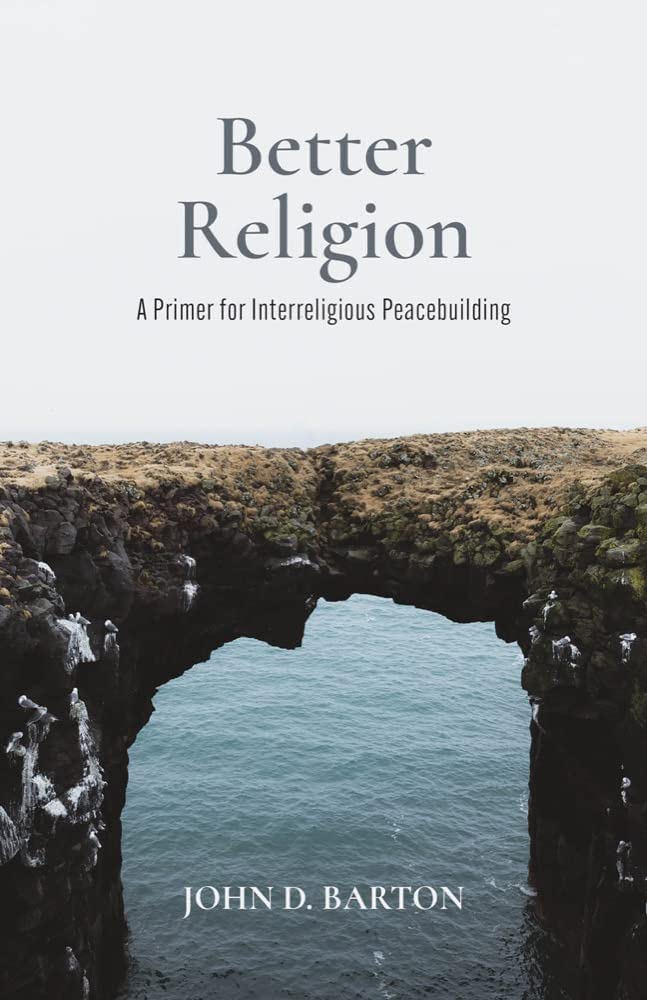Reviewed by Eduard van der Merwe, Department of Economics
When the world depletes us of optimism, hope remains. This message resonates throughout John Barton’s Better Religion: A Primer for Interreligious Peacebuilding. In this compact book, Barton is able to clearly articulate his thesis on religion’s role in peacebuilding with writing that makes it accessible to everyone. Scholars, community leaders, and members of the general public interested in understanding religion and interreligious peacebuilding efforts will find this primer useful in enhancing their religious literacy – something that is desperately needed. Barton challenges some common assumptions, such as minimizing religious disagreements for peacebuilding, by arguing that religious differences and interreligious collaboration are profoundly compatible. Throughout the book, both the peaceful and violent capacities of various religious traditions are highlighted; however, Better Religion conveys how communities can identify and mobilize the former such that grassroots interreligious peacebuilding can help ensure the “better.”
Barton's main aim is to provide the readers with a “toolbox of resources for thinking about religion in the twenty-first century and imagining the prospects for peacebuilding across even the most challenging of religious differences” (p. 9). Barton accomplishes this by dividing the book into two parts. In Part I, the readers are exposed to an “aerial view” of religion. This part establishes the relevance and urgency of interreligious peacebuilding in the 21st century – something Barton indubitably believes in. Barton, who is steadfast in his personal Christian beliefs, goes to great lengths to highlight his beliefs and the viewpoint he is writing from. Even though this seems unnecessary (since his beliefs do not dominate the book), it fits in with his theory that no one can write on religion or religious issues from a neutral standpoint. Part II is where Barton gets into the thick of things. The objective is to use insights from different kinds of models and ideas about religion – assessing each one's advantages and limitations – to improve our understanding of religious identity, religious agency, religious similarity, as well as differences and peace.
During an interview as part of the Boniuk Institute Reading Religion Salon, I asked Dr. Barton about some key reasons for writing this book. First, he stressed that interreligious peacebuilding has never been more important than it is now. He outlined the urgency of different communities coming together to collaborate for the greater good of society. Second, he mentioned the effectiveness of grassroots-level movements. Throughout the book, this grassroots activism is an evident theme. He uses specific examples to illustrate how these movements bubble up and reach institutional levels that enact constitutional transformations. Lastly, he hopes that readers realize that for interreligious peacebuilding to be effective, we need to acknowledge our differences and not shy away from them. He believes that people can find common ground by honoring their differences – even when the differences are theologically irreconcilable.
Reading an introductory text on world religions and having some initial literacy of these traditions might be beneficial before reading Barton’s book, since Barton underscores how these religious traditions can be used for the “better” or “hijacked” toward the bad. Specifically, Barton explores “thick religion” – a religion that “leans into a tradition’s originating or transcendent vision” (p. 56) – and “thin religion” – a religion that is “emptied of their moral visions and reduced to vague religiosity” (p. 56). This difference is emphasized since interreligious peacebuilding requires people who operate grassroots initiatives to have access to “thick, normative, community-enriching, peace-enabling resources” (p. 215). Barton is not oblivious to the tremendous task of interreligious peace. Nevertheless, given the current circumstances facing humanity in the 21st century, the message of this book is of urgent importance. The war between Israel and Hamas, as well as rising antisemitism, Islamophobia, and Christian nationalism does not necessarily spell optimism for interreligious peace. However, Barton provides “coordinates of hope” and a conceptual framework of religion’s peaceableness such that the “impossible starts to become possible” (p. 218).

